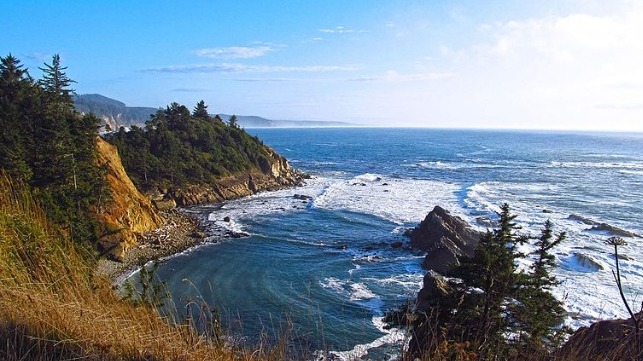Oregon Bill Aims for Three GW of Floating Offshore Wind by 2030

A Republican state senator has introduced a bill to set up a floating wind task force for the state of Oregon, aiming to promote commercial-scale floating wind farms off the southern coastline by 2030.
Rep. David Brock Smith (R-Port Orford), who represents a segment of the Oregon coast with strong wind potential, has introduced a bill to establish a new "Task Force on Floating Offshore Wind Energy." The goal is to provide local electrical power and economic development for the isolated southwestern quarter of the state, as well as an additional source of power for inland communities. The transmission infrastructure to export energy from coastal Oregon is in place already, Smith noted, unlike some of the high-wind-potential areas in northern California.
The Bureau of Ocean Energy Management (BOEM) has launched a floating offshore wind leasing process for federal waters off the West Coast, and Smith's bill proposes a task force to begin "proactive planning" with affected Oregon coastal communities. The panel would engage with fishermen, conservation interests, manufacturers, maritime firms, port operators, electricity rate payers and tribes, aiming to maximize local benefits and minimize conflicts between stakeholders.

that matters most
Get the latest maritime news delivered to your inbox daily.
The bill includes a target to promote the development of three gigawatts of floating offshore wind power by 2030 - an ambitious goal equal to 100 times the scale of the largest existing floating wind farm today. As a starting point, the plan calls for promoting 500 megawatts of floating offshore wind off the southern Oregon coast to power a renewable hydrogen production plant, with completion by 2025.
According to the National Renewable Energy Laboratory, floating offshore wind development could support up to $6 billion in construction-phase economic activity off Oregon by 2050, along with 44,000 to 66,000 full-time equivalent construction job-years. In a coastal region with a total population of about 150,000 people, this would have a game-changing economic impact.
